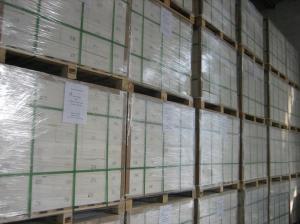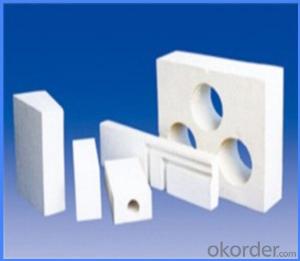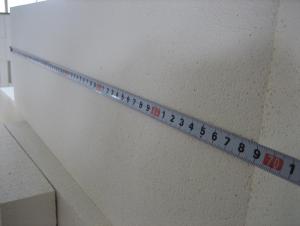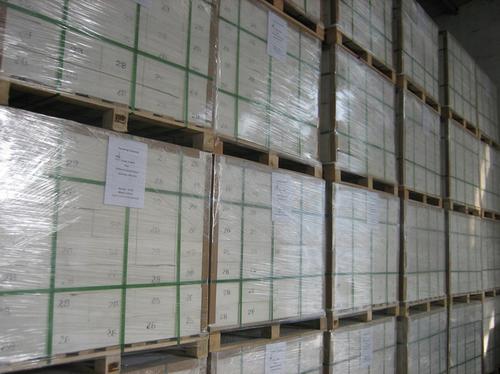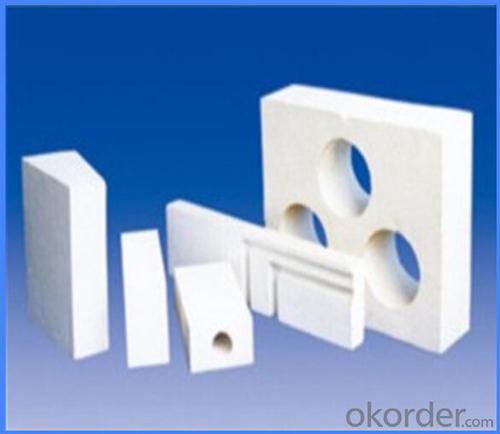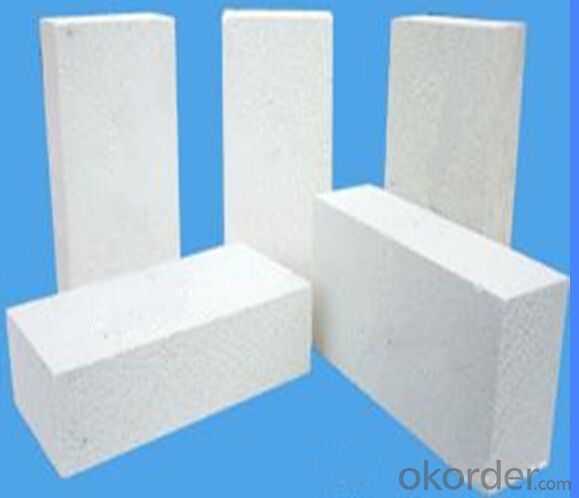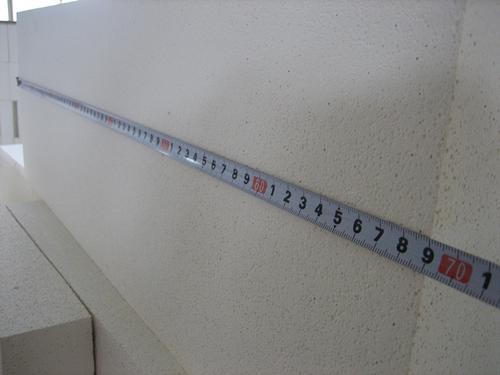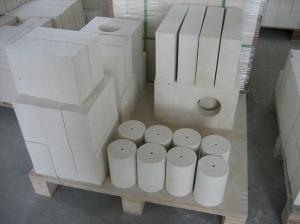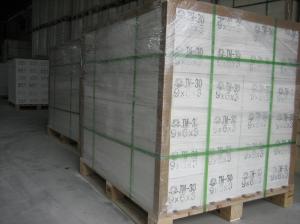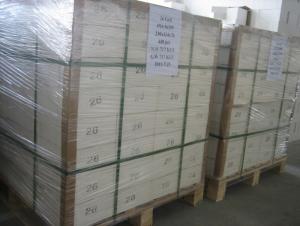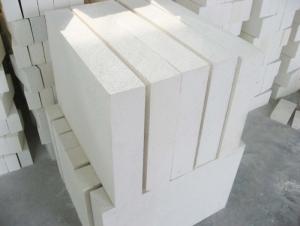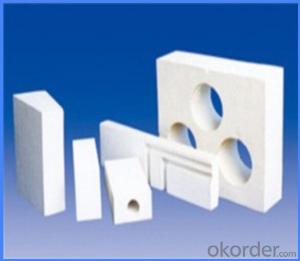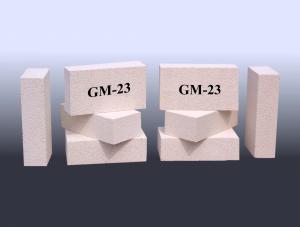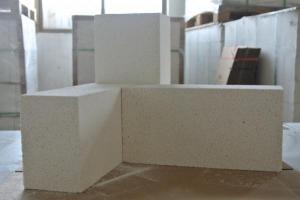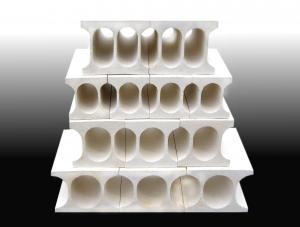Insulating Fire Brick - Refractory Mullite Insulating Refractory Brick JM 33
- Loading Port:
- Shanghai
- Payment Terms:
- TT OR LC
- Min Order Qty:
- 20 m.t.
- Supply Capability:
- 20 m.t./month
OKorder Service Pledge
OKorder Financial Service
You Might Also Like
General Information
CMAX insulating firebricks are classified under temperature between 1300℃ to 1700℃, manufactured from high purity alumina clay.
1. Lower content of iron, alkaline and impurities, good high temperature properties.
2. Homogeneous structure, light weight, energy saving because lower heat storage in the furnace during cooling cycles.
3. High strength, good thermal shock resistance under high temperature.
4. Precise sizes due to grinding and shaping after sintering, which meets the requirement of construction.
5. Max service temp: Up to 1730C (3160F)
Feature
Light weight and low thermal conductivity
Low heat storage
Low iron and impurities
High thermal shock resistance
Application of Insulating brick
Metallurgical Industry: blast furnace, hot blast furnace, heating furnace, etc..
Petrochemical Industry: ethylene cracking furnace, hydrogen furnace, the main furnace, heating furnace, etc..
Ceramic industry: roller kiln, kiln, etc..
Glass industry: glass furnace regenerator, etc.
Carbon industry: carbon furnace, etc..
Aluminum electrolysis industry: aluminum reduction cell, etc.
Other industries: tunnel kiln, shuttle kiln, etc.
Advantages of heat insulation brick
Low thermal conductivity: many air holes will bring good thermal insulation effect, energy saving.
High crushing strength: high crushing strength, volume stability.
Low heat storage: small heat storage, absorb more heat, energy-saving effect is obvious.
Technical Data
ITEM | GJM30 | GJM28 | GJM26 | GJM23 |
Classification Temperature, ℉/℃ | 3000/1650 | 2800/1540 | 2600/1430 | 2300/1260 |
Bulk Density,g/cm³ | ≤1.0 | ≤0.9 | ≤0.8 | ≥0.5 |
Reheating Linear Change, % | ≤0.9 (1550℃,12 h) | ≤0.8 (1510℃,12 h) | ≤0.7 (1410℃,12 h) | ≤0.5 (1230℃,12 h) |
Al2O3 Content, % | ≥75 | ≥65 | ≥55 | ≥45 |
Fe2O3 Content, % | ≤0.5 | ≤0.6 | ≤0.7 | ≤1.0 |
Thermal Conductivity: | ||||
800℃, w/m.k | ≤0.39 | ≤0.37 | ≤0.35 | ≤0.18 |
1000℃, w/m.k | ≤0.43 | ≤0.41 | ≤0.39 | ≤0.20 |
1200℃, w/m.k | ≤0.48 | ≤0.46 | ≤0.43 | --- |
Insulating brick
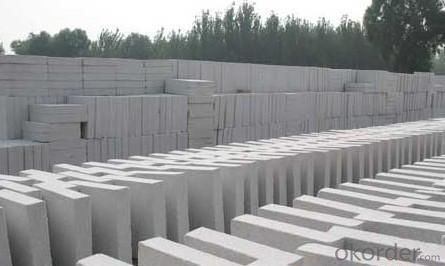
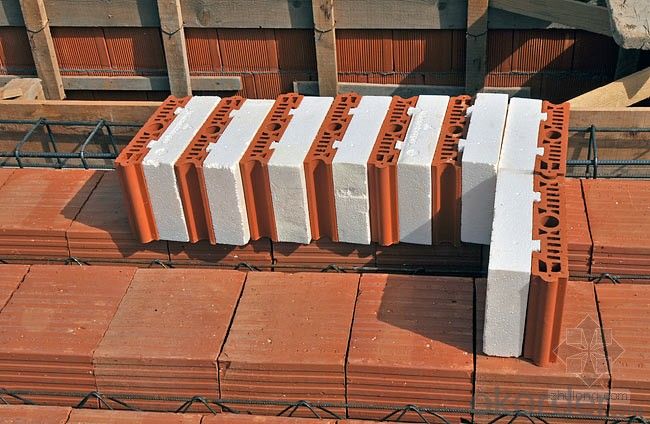
Common problem solution
1. What products do you have?
We have all kinds of refractory bricks, refractory casting materials, mortar, cement, ceramic fiber products, etc..
Or you can browse our products to choose what you need.
2. How to control product quality?
With strict quality control system throughout the material selection and production process, we have the quality of refractory materials and ceramic fiber products to meet customer requirements.
From the selection of raw materials, the quality of our control to start. The quality of the raw materials required for each batch of products in the use of the front line test. In the production process, through the quality control of workers, and then to each piece of classification, and through quality supervision and inspection.
3. Could you give me a brief introduction to the application of your product?
My Company is mainly engaged in steel, cement, glass, ceramics, petrochemical, electric power and other industries.
4. If I need you, what kind of information do you need?
In order to select the right products, we will provide us with information, such as the United States, technical data, order quantity, product applications, etc..
If you have any questions, please contact us.
- Q: Can insulating fire bricks be used in solar power plants?
- Insulating fire bricks have the ability to be utilized in solar power plants. These bricks are specifically designed to possess exceptional thermal insulation properties, thus making them suitable for various applications that demand resistance to heat and energy efficiency. Solar power plants frequently experience high temperatures and the necessity to retain heat, particularly in concentrated solar power (CSP) systems. By using insulating fire bricks to line the walls and floors of CSP receivers and thermal storage systems, the loss of heat can be minimized and the conversion of solar energy into electricity can be maximized. Furthermore, insulating fire bricks can also find utility in other components of solar power plants, such as the insulation of solar panels or the construction of solar tower structures.
- Q: Can insulating fire bricks be used for insulation in cement kilns?
- Yes, insulating fire bricks can be used for insulation in cement kilns. Insulating fire bricks are made from lightweight materials with high insulation properties, such as ceramic fibers or expanded clay. These bricks are designed to have low thermal conductivity, meaning they can effectively reduce heat transfer and retain heat within the kiln. Cement kilns operate at very high temperatures, often exceeding 1,400 degrees Celsius (2,500 degrees Fahrenheit). The use of insulating fire bricks in the kiln can help prevent heat loss, improve energy efficiency, and reduce fuel consumption. These bricks create a barrier between the hot gases inside the kiln and the outer environment, reducing the amount of heat that escapes. Moreover, insulating fire bricks have excellent resistance to thermal shocks, allowing them to withstand the extreme temperature fluctuations that occur in cement kilns. This durability ensures long-lasting insulation, reducing the need for frequent maintenance and replacement. However, it is important to note that the specific type and composition of insulating fire bricks required for cement kiln insulation may vary depending on the kiln's design, operating conditions, and other factors. It is advisable to consult with experts or manufacturers who specialize in refractory materials to ensure the correct selection and installation of insulating fire bricks for cement kiln insulation.
- Q: Do insulating fire bricks have a high fireproof rating?
- Yes, insulating fire bricks have a high fireproof rating. They are designed to withstand high temperatures and provide excellent insulation, making them ideal for applications where fire resistance is necessary.
- Q: Is it necessary to abolish the technical regulations for the construction of self thermal insulation masonry building with sludge sintering insulation bricks?
- The original "technical specification for self insulation masonry building with silt insulation bricks" has been replaced by DGJ32/TJ78-2009 (technical specification for automatic insulation wall system of sintered silt non bearing insulating brick) DGJ32/TJ78-2013.
- Q: Are insulating fire bricks resistant to nitric acid?
- Insulating fire bricks usually lack resistance against nitric acid, a highly corrosive substance that can dissolve various materials, including specific types of fire bricks. Although insulating fire bricks are intended for enduring high temperatures and providing thermal insulation, they may not possess the required chemical resilience to withstand the corroding impact of nitric acid. When anticipating exposure to nitric acid, it is recommended to employ materials specifically engineered for acid resistance in such situations.
- Q: Can insulating fire bricks be used in carbon black reactors?
- Yes, insulating fire bricks can be used in carbon black reactors. These bricks are designed to withstand high temperatures and provide excellent thermal insulation, which makes them suitable for use in carbon black reactors that operate at extreme temperatures.
- Q: Do insulating fire bricks have a high fire resistance rating?
- Yes, insulating fire bricks have a high fire resistance rating. Insulating fire bricks are specially designed to withstand high temperatures and provide excellent insulation against heat transfer. They are made from high-purity refractory materials, such as alumina and silica, which have a high melting point and can withstand extreme heat. These bricks are capable of withstanding temperatures of up to 3000°F (1650°C) and have a thermal conductivity that is much lower than regular bricks or other materials. This makes them ideal for use in applications where high fire resistance is required, such as in industrial furnaces, kilns, fireplaces, and chimneys. Additionally, their insulating properties help to reduce heat loss, making them energy-efficient and cost-effective.
- Q: What are the sizes of lightweight thermal insulation bricks?
- The production of material ordinary lightweight insulating refractory brick with fireclay and high alumina high strength bead brick
- Q: Can insulating fire bricks be used in wood-fired kilns?
- Yes, insulating fire bricks can be used in wood-fired kilns. Insulating fire bricks are specifically designed to withstand high temperatures and provide insulation, making them suitable for use in wood-fired kilns where temperatures can reach extreme levels.
- Q: Can insulating fire bricks be used for chimney lining?
- Yes, insulating fire bricks can be used for chimney lining. Insulating fire bricks are specifically designed to withstand high temperatures and are excellent at retaining heat. They have a low thermal conductivity which helps to prevent heat loss and improve the efficiency of the chimney. Additionally, insulating fire bricks are resistant to cracking and spalling, making them a durable option for chimney lining. However, it is important to ensure that the insulating fire bricks used are suitable for the specific type of chimney and comply with local building codes and regulations.
Send your message to us
Insulating Fire Brick - Refractory Mullite Insulating Refractory Brick JM 33
- Loading Port:
- Shanghai
- Payment Terms:
- TT OR LC
- Min Order Qty:
- 20 m.t.
- Supply Capability:
- 20 m.t./month
OKorder Service Pledge
OKorder Financial Service
Similar products
Hot products
Hot Searches
Related keywords
